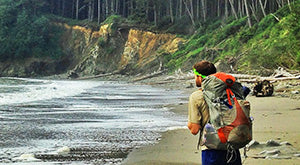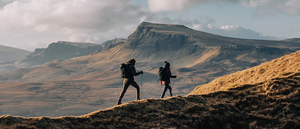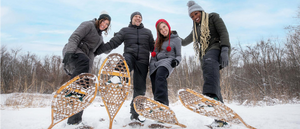A Guide To Choosing Skiing & Snowboarding Bibs

Love to go skiing? If yes then you will agree for sure that the most important thing on a ski slope is keeping yourself warm and dry. Imagine how much more fun that would be if your clothes weren't soaking wet from sweat or chilled by cold air? With waterproof fabrics coming into fashion year after year, people wanted something better than what was available before; which meant an upgrade for their old school bibs.
The bibs vs. pants debate is an age-old one, but there are some important considerations to make before you choose which protection option works best for your needs.
For those who ski or ride in cold weather, bibs are a better option than pants. They offer more protection from the elements and keep you warmer due to the coverage they offer around your torso as well as legs. The main reason many people prefer wearing these over regular jeans is they help avoid becoming too uncomfortable after prolonged use; another benefit? It's easier to take them off during breaks on long days out there!
There are several factors that you must consider before choosing bibs for skiing and snowboarding. Let’s check out!
Waterproofing
The best way to stay dry while skiing or riding is by using a bib with waterproof fabric. Bibs that are rated at 5,000 - 20,000 mm will keep you stay warm while you’re skiing in the snow. However the higher this number gets (the more waterproof), so does weight! For milder conditions where it may be warm enough without added insulation then consider the less waterproof bib to be lighter weight.
The difference between a bib with seams taped or un-taped can have major impacts on its waterproofness. Flylow’s Baker Bib and FoxyB Unstable both utilize 3 layers of laminate to make them fully sealed. Most other options fall into one category: partially seam construction, where the critical areas such as around zippers will be layered in fabric stronger than what's being used outside those zones. So that if anything goes wrong during an activity like skiing, they'll still keep water out by design.
Bib Insulation
There are a variety of bibs that you can choose from, including insulated, lined, or shell fabric options. The shell fabric is great for tours because it’s lighter in weight than other types while still providing good thermal regulation when climbing up on the uphill side!
In the winter, make sure you're wearing enough layers. Shell bibs are a great way to keep your core warm and dry when out on an extended hike in cold weather. Just be aware that you layer your shell bibs over thin or mid-weight baselayers. If it's windy or below freezing then add heavier gear like insulated pants for additional warmth. In warmer months you can use lighter fabrics.
If you always find yourself shivering on the mountain, insulated bibs can help keep your core warm. They're not as bulky and provide great coverage to protect from wind chills or snowdrifts that might get inside your jacket sleeves!
Discipline-Specific Bibs
Whether you're an experienced athlete or just getting started, we recommend prioritizing the types of pursuits that are most often done in your day-to-day life when deciding which bib is right for you.
If you tour, make sure your uninsulated bib has plenty of vents so that heat doesn’t build up and cause problems while you climb up a skin track or when stopped at aid stations.
If you're a resort-centered skier, it's best to get something that is lightly insulated and has plenty of pockets. You will need your pass or phone while on the chairlift as well!
Fit
If you're looking to have an epic day on the slopes, it's important that your clothes fit right. A comfortable skiing suit will help keep distractions at bay and allow for clearer thinking when taking those first few steps off of lift lines into the fresh air!
When it comes to bibs, there’s a range from simple suspender-style straps to full overalls. This can affect both fit and warmth because you need adjustments depending on what clothes will be underneath for your day in the mountains!
There are a lot of different brands out there with unique styles and fits for every snowboarder. You might want to try on several bibs before you make your decision, as each company has its own particular style that they offer which will be more suited towards what kind of experience one wants.
If your measurements fall into an American brand like Patagonia or Burton then they will be more casual and relaxed in their design while brands like Norrona or Arc’teryx may have a technical fit that is also closer to your body.
Features To Look For
Venting
For touring, zippered vents are important because they allow you to dump heat. Most bibs feature both outer and inner thigh or full side zippers for venting. They even allow you to remove boots whenever needed.
The breathable fabric on the back panel of a bib often helps regulate temperature where you need it most, especially during hot weather. Zippered vents allow for quick dumping of excess body heat so that your ride isn't too unbearable!
Pockets
If you’re not skiing with a pack, pockets can help keep your snacks secure and give you an energy boost on the mountain. Thigh-level cargo pockets store food to avoid midday hunger while some bibs have dedicated beacon pouches so that lifesaving equipment is always at hand.







Leave a comment